Art World
Feminist Artist May Stevens, Who Voiced Opposition to War and Inequality in Her Work, Has Died at 95
"To the women’s movement I would like to bring, as to art, the subtlest perceptions," Stevens once said.
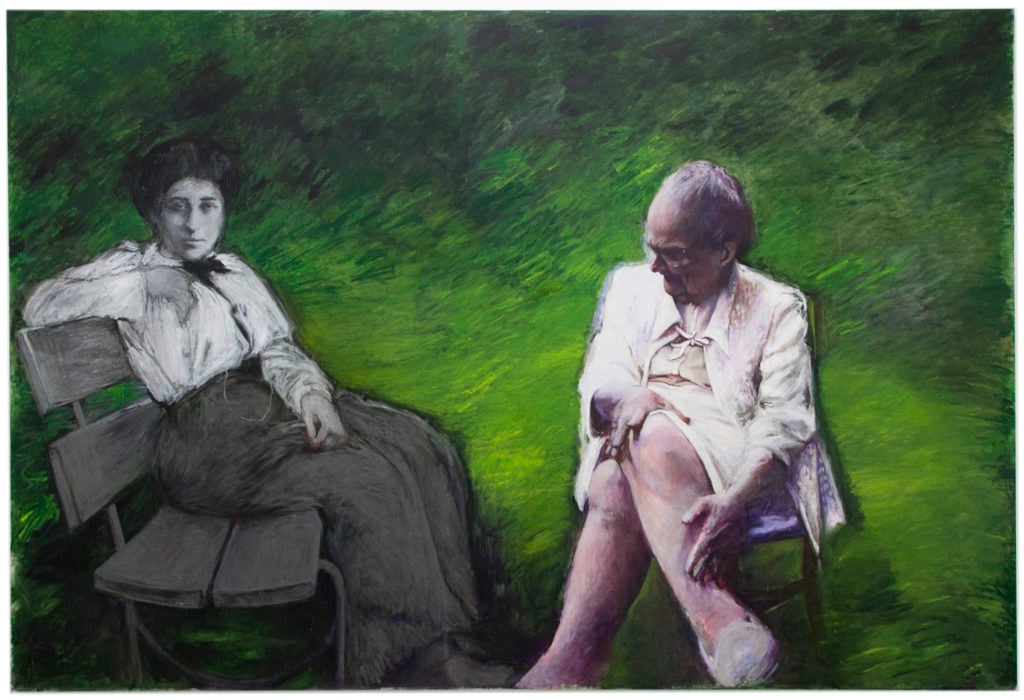
"To the women’s movement I would like to bring, as to art, the subtlest perceptions," Stevens once said.

Sarah Cascone

The 95-year-old activist and artist May Stevens died on Monday in Santa Fe, New Mexico, after suffering from Alzheimer’s disease for several years. A native of Quincy, Massachusetts, Stevens had lived in Santa Fe since 1996.
“Stevens will be remembered for her extraordinary art legacy,” read a statement from the artist’s gallery, New York’s Ryan Lee. “We also remember Stevens as a spirited and opinionated conversationalist, a prolific writer, and a devoted friend to those she held close.”
Known for her monumental paintings, as well as her work in drawing, collage, and printmaking, Stevens was also an outspoken opponent of the Vietnam war and a supporter of the feminist and Civil Rights movements.
Stevens studied at the Massachusetts College of Art, the Académie Julian in Paris, and the Art Students League of New York. There, she was one of only a handful of living artists featured last month in “Postwar Women,” an impressive survey of female students who attended the school between 1945 and 1965. (Stevens was enrolled in 1948.) Four other prominent artists featured in the show also died in 2019: Mary Abbott, Mavis Pusey, Joyce Pensato, and Monir Farmanfarmaian.
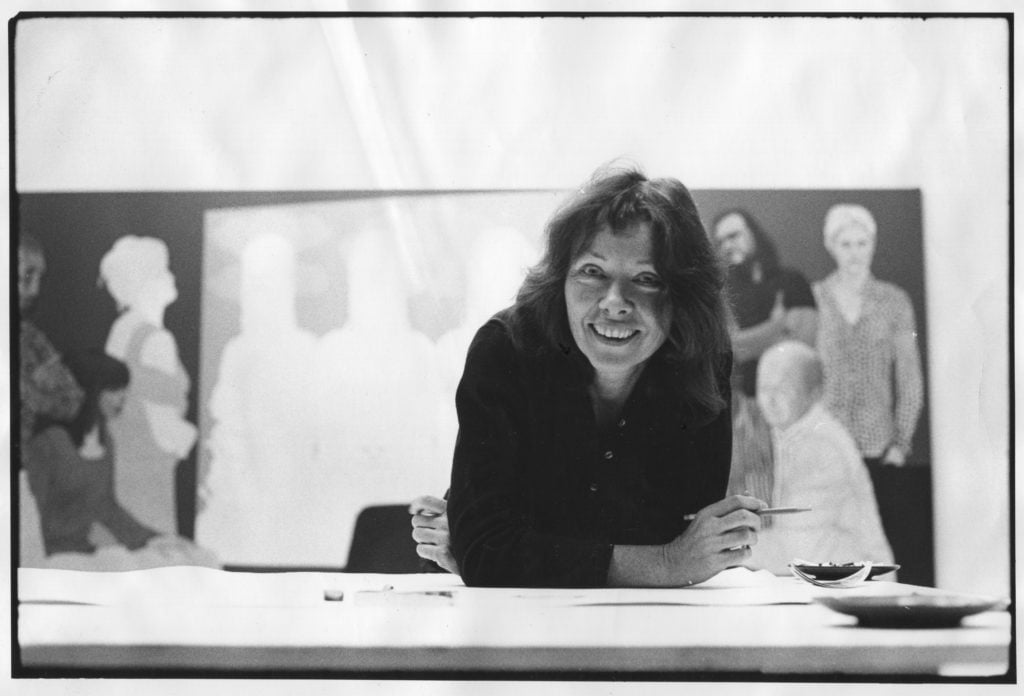
May Stevens in her Soho studio with The Artist’s Studio (After Courbet) (1974). Photo by Joyce Ravid.
Stevens went on to work as an art teacher at a Queens public high school for nine years, and then spent another 35 years teaching at New York’s School of Visual Arts.
She was married to fellow artist and political activist Rudolf Baranik from 1948 until his death in 1998. The couple was the subject of joint exhibitions at MoMA PS1 as part of its “Art Couples” series in 1982, and at New York’s Exit Art in 1994. Their only son, Steven, also an artist, died in 1981.
Stevens often addressed political controversy in her work. Her first major painting series, “Freedom Riders,” from 1963, was inspired by protests against segregated buses in the American South. She also painted a death portrait of Malcolm X after visiting his casket in 1965.
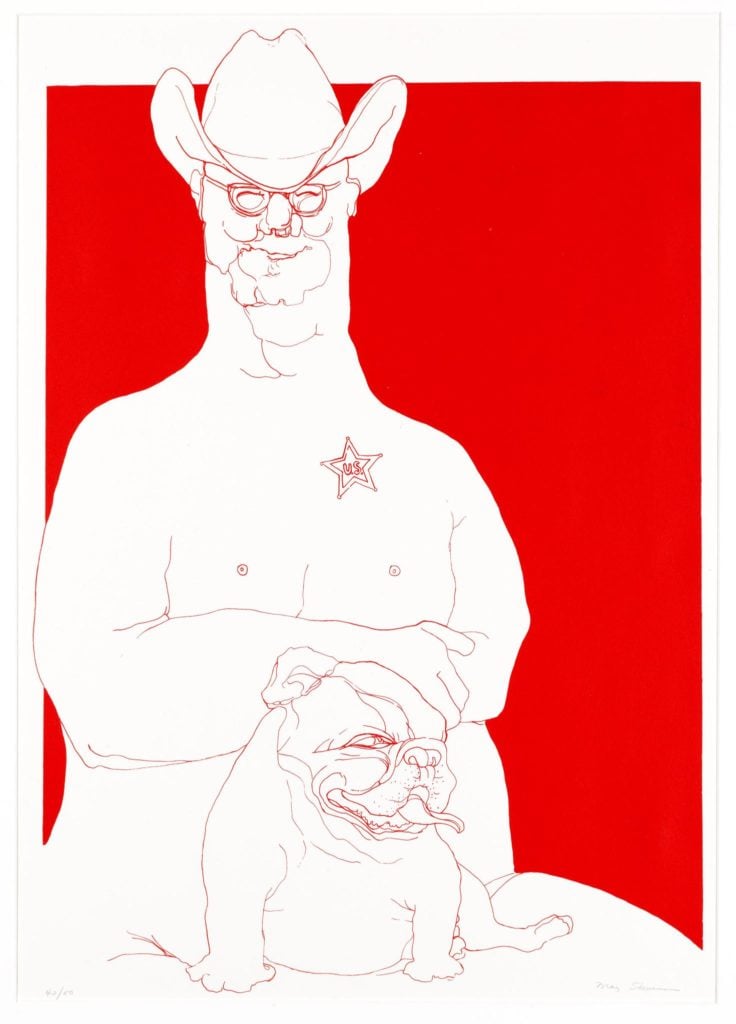
May Stevens, Big Daddy (circa 1970). Courtesy of the Whitney Museum of American Art, New York/Ryan Lee Gallery, New York, ©May Stevens.
In 1967, Stevens became a founding member of Artists and Writers Protest Against the War in Vietnam. Her celebrated “Big Daddy” series of caricatures of racist men—reflecting her own father’s racist attitudes—criticized what she viewed as an unjust war.
The artist was also an outspoken feminist. Inspired in part by Linda Nochlin’s seminal 1971 ARTnews essay “Why have there been no great women artists?,” Stevens helped found the women’s magazine Heresies: A Feminist Publication on Art and Politics in 1976.
Several of the magazine’s co-founders, including Lucy Lippard, Miriam Schapiro, Joyce Kozloff, and Harmony Hammond, appeared in Stevens’s 1978 history painting Soho Women Artists, now in the collection of the National Museum of Women in the Arts in Washington, DC.
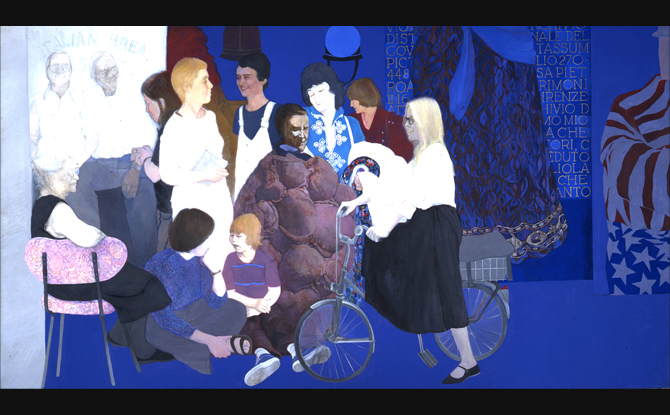
May Stevens, Soho Women Artists (1978). Courtesy of the National Museum of Women in the Arts, Washington, DC/Ryan Lee Gallery, New York, ©May Stevens.
In Patricia Hills’s 2005 book May Stevens, the artist spoke frankly about her ideals, and how they influenced her work: “To the women’s movement I would like to bring, as to art, the subtlest perceptions. To political action, I would like to bring, as to art, a precise and delicate imagination.”
Though Stevens is not a household name, her work is part of the collections of major public institutions such as the Brooklyn Museum, the British Museum, Metropolitan Museum of Art, the San Francisco Museum of Modern Art, and the Cleveland Museum of Art. Her 1999 retrospective at the Museum of Fine Arts, Boston, “Images of Women: Near and Far,” was the institution’s first solo show dedicated to a living female artist.
And as museums across the country begin to take a broader look at art history to identify overlooked women artists, Stevens may be on the cusp of more widespread recognition. Already, the Whitney Museum of American Art in New York featured her work in its much-praised 2015 exhibition “America Is Hard to See,” and you can also spot a pair of her “Big Daddy” works in the canon-redefining rehang at the Museum of Modern Art.
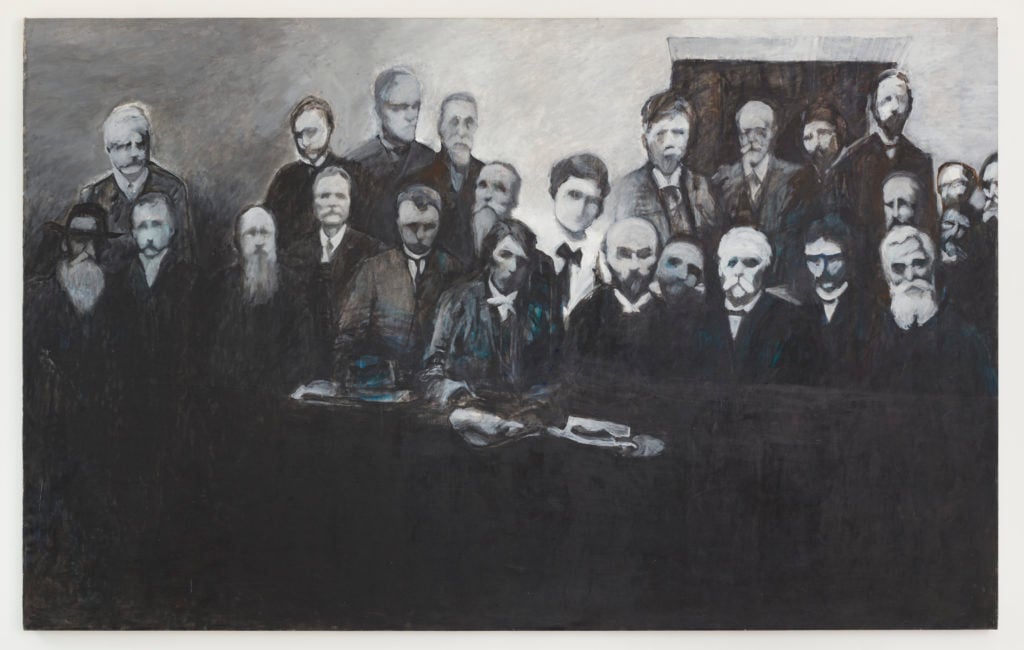
May Stevens, Rosa Luxemburg Attends the Second International (1987). Courtesy of RYAN LEE Gallery, New York, ©May Stevens.
Elsewhere, Stevens is included in “Artists Respond: American Art and the Vietnam War, 1965–1975,” a traveling exhibition now at the Minneapolis Institute of Art. A solo show of a selection of some of the 70 works she made inspired by political activist Rosa Luxemburg is on view at Ryan Lee gallery through December 21.
The artist’s honors include a Guggenheim Fellowship in painting (1986), a National Endowment for the Arts Fellowship in painting (1983), an Andy Warhol Foundation residency (2001), and the Distinguished Artist Award for Lifetime Achievement by the College Art Association (2001).